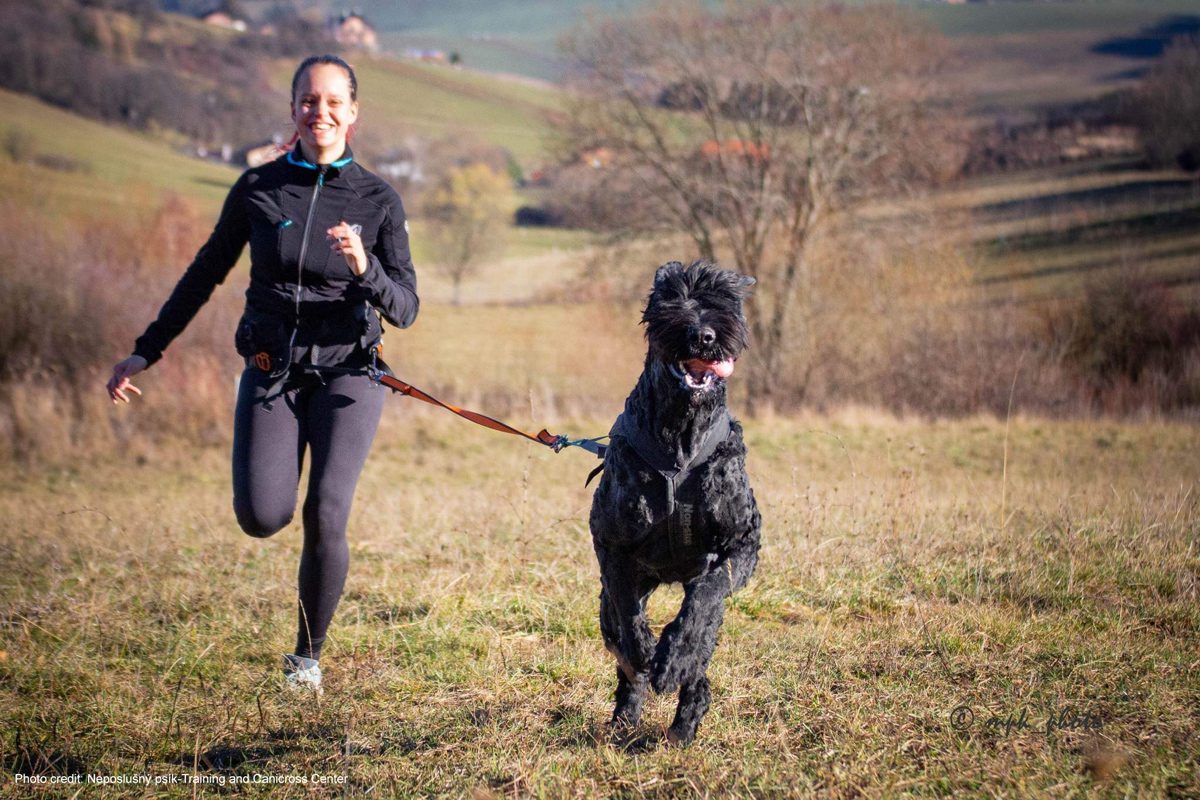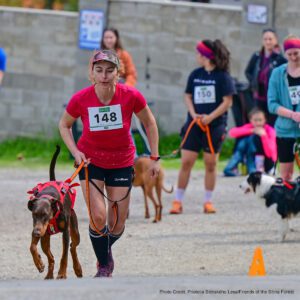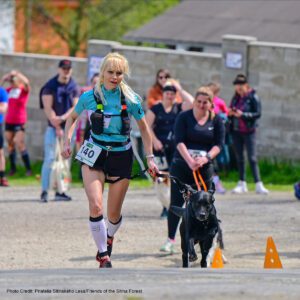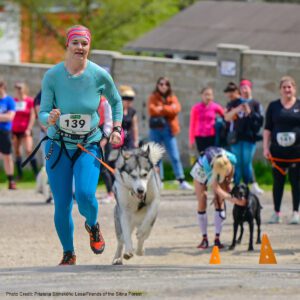
Jun 26, 2023 Sloboda Zvierat’s First Canicross Event
For those of us who enjoy playing with our dogs, such as tossing a ball or stick for them to fetch, the world offers many more challenging exercise opportunities. Now, a new human-pet dog sport has appeared – CANICROSS or CANI-X. In canicross, the owner and dog run together in a cross-country race. The human wears a waist belt, while the dog has a special harness. Dog and human are connected by a bungee (or elastic) chord that reduces the shock to both owner and dog when the dog pulls on the chord. The sport originated in Europe as off-season training for the “mushing” (sled-dog racing) community but has now evolved into its sport with national and even international competitions.
According to the International Canicross Federation, canicross was invented separately in the 1980s in Belgium and France. The first European championship was held in Belgium in 1998, and in 2004, the European Canicross Federation (ECF) was formalized in Switzerland. In 2016, the ECF changed its name to the International Canicross Federation (the ICF). The ICF currently has 29 national member organizations.
Canicross offers an excellent opportunity for animal NGOs because it allows people and their dogs to participate as equal partners they can enjoy. WellBeing International’s Ukraine Rescue, Relief & Rebuild (U3R) partner, Sloboda Zvierat (SZ), has entered the competition and the fun. Sloboda Zvierat, with its roots in the community, also engages in a wide variety of campaigns, including those addressing the welfare of livestock, animals in research, and wild animals, in addition to the usual companion animal issues. Sloboda Zvierat was founded almost 30 years ago by a remarkable woman, Pavla Dugovičová, who is still actively participating in its operations.
According to Kristina Devinska, SZ, in cooperation with the newly formed community association, Priatelia Sitineského lesa translated as Friend of the Sitina Forest, held its first canicross competition this spring. It was a tremendous success in the community. The video above shows a human and her canine partner waiting for the start of a race. The dog is impatient, as the excited, high-pitched yelps indicate. When the start signal is given, the dog sets off at speed with the human partner following behind.
Dogs are typically the leaders in this human-canine partnership. If two legs are good, then four legs are better! The human partner, however, needs to be able to guide the dog by issuing direction commands at appropriate points in the race. The dog needs to know the difference between left and right, a skill that even some humans lack, and respond to the direction commands issued by the human partner. Given the eagerness shown by the dog in the video, dogs experience significant enjoyment when participating in such events. Blogs on the ICF website indicate that human competitors also enjoy and gain satisfaction from these events. One could visualize the development of an international competition between teams entered by different animal NGOs worldwide.
However, canicross requires some organizing. Throwing together a group of people and dogs who are not used to each other can be a challenge, and it is wise to establish appropriate rules for such events, including training guidelines for both dogs and humans. One of the most essential rules concerns the ambient temperature. Dogs have trouble thermoregulating (mainly achieved by panting), and as temperatures increase, it becomes more dangerous for dogs to run for extended periods. The daytime temperature for a canicross race should preferably be 100C or less (around 500F). A temperature over 610F is dangerously hot for dogs. Therefore, for the most part, canicross will be a winter sport.
It is also essential to have a dog harness that is correctly fitted to the dog, and one needs to pay attention to paw care for the dogs and avoid extended running on hot tarmac. Race organizers need to keep dogs away from human aid stations. Appropriately spaced tethers and water bowls must be set up so the dog can be safely left if a human competitor needs first-aid assistance. Meticulously organized canicross events (including the training before such events) can benefit human and canine competitors.
We congratulate SZ and Priatelia Sitineského lesa for holding an exceptionally well-organized canicross and for helping to lead the way to improve the well-being of animals and people within their communities.





